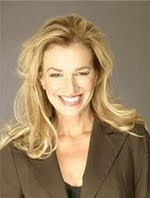 by Katherine Ramsland
by Katherine Ramsland Over the summer, a production team for the Investigation Discovery (ID) channel filmed my commentary as the recurring expert for American Occult, a proposed series on extreme crimes with supernatural associations. I have written a number of articles and books about vampires, ghosts, satanic activities, forensics, and serial killers, as well as interviewing occult practitioners firsthand and watching certain rituals. All crime has an element of darkness, certainly, but an obsession with occult power that precipitates murder--especially serial or mass murder--is entirely black.
The producers from M2 Pictures sent me background information on each case before we spent several long days discussing every aspect, from methods to motives. Despite the diversity among these cases, the desire for supernatural power emerged as a unifying theme. (Note: Wanting it is not the same as getting it.) We have centuries of proof to the contrary, but some people still believe that serving Satan with human sacrifice guarantees a larger-than-life return. They like the risk, but they also seek to be marked as “special,” “mysterious,” or in possession of some great secret.
On October 30, ID will show all three episodes--six cases--of these creepy crimes. We go inside the sinister worlds of self-professed vampires, cannibals, and Satanists, to consider the psychology behind the deadly rituals. But let me just say something first about the ID network. When Court TV met its demise a couple of years ago, it left a big hole for crime fans. Investigation Discovery jumped in to fill it and has been building itself as America’s leading source for investigation TV. It’s a cable network, so you have to look for it, but crime fans who try it are pleasantly surprised. ID has done some remarkably innovative series--including one devoted to female offenders. They have formed partnerships with established news organizations and production companies to bring investigative and current affairs programming to (so far) over 71 million U.S. households. Speaking for myself, I’m happy to know that someone is making documentaries about these infamous offenders and crimes. I use them all the time for teaching.
So, back to American Occult. Each episode features two unique stories about mysterious deaths, kidnappings, or rituals. I've published 38 books and more than 900 articles, many of which focus exclusively on occultic crimes, and on the programs I lead viewers through the bizarre twists and turns. Thanks to the cases I’ve explored, I can offer readers an in-depth analysis of the worlds of these killers, explaining their thought processes, their beliefs, even their delusions, as well as how their crimes relate (or don’t) to the broader scheme of some dark subculture.
The showings begin at 8 p.m. ET with “Savage Sin,” in which a tip led police to the mutilated body of a woman in a field outside Chicago. Soon, victim after victim turned up dead, all of them female and all mutilated in a similar manner. Then, a survivor described how she’d been abducted and horribly violated. Her information led to the arrest of the “Ripper Crew," a group of young men (mugshots, above) who purportedly worshiped the devil by cannibalizing female body parts. From this story, we move right to a priest in Ohio who murdered a nun, leaving a ritualized crime scene with an inverted crucifix. Although the case went cold, new leads opened it up and brought the surprising killer to justice.
If you’re still with me, “Blood Lust” depicts a group of students in Fall River, Massachusetts , who discovered the body of a local prostitute. Her skull was completely crushed in what looked like a primeval ritual. Another murder three months later evinced the same pattern, leading investigators to a secret underground cult of devil worshipers. Once this case is cracked, we move on to a real Halloween tale of a woman who’d barely escaped a man claiming to be a vampire. He’d been draining her of blood, fully expecting to kill her, as he’s suspected of having done to many others.
 In the final hour, we have “Evil Sacrifice.” In this story, the rumors of a religious cult and a missing family led police to a man who believed he was God. After the cult members left their compound, the authorities discovered a mass grave. Then comes our last story, also from the Midwest: When police responded to an emergency call at the Ohio home of Terry and Marilynn Brooks, they found a shocking homicide and learned that one of the Brooks’ sons had a dark and terrible secret. The photo right is an ID photo of Jerry Brooks' collection of satanic books.
In the final hour, we have “Evil Sacrifice.” In this story, the rumors of a religious cult and a missing family led police to a man who believed he was God. After the cult members left their compound, the authorities discovered a mass grave. Then comes our last story, also from the Midwest: When police responded to an emergency call at the Ohio home of Terry and Marilynn Brooks, they found a shocking homicide and learned that one of the Brooks’ sons had a dark and terrible secret. The photo right is an ID photo of Jerry Brooks' collection of satanic books.It’s an interesting way to spend the evening before Halloween.
Dr. Katherine Ramsland teaches forensic psychology and criminal justice at DeSales University in Pennsylvania. Dr. Ramsland has master’s degrees in both clinical and forensic psychology from, respectively, Duquesne University and Jay College of Criminal Justice, as well as a Ph.D. from Rutgers University. Her latest book is The Forensic Psychology of Criminal Minds (Berkley).



















































